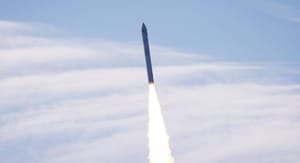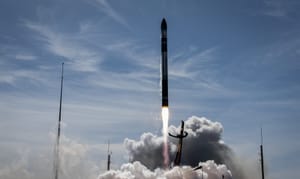
Mar 30, 2024
SpaceX aims to crush seven records with three Falcon 9's within five hours
SpaceX is never one to rest on their laurels. The last few years have demonstrated that each time they hit a bottleneck, the company manages to pull a rabbit out of a hat, to increase manufacturing rates, decrease turnaround times, decrease launch costs, and increase performance.
EDITOR'S NOTE: Due to the density of statistics in this article and the likelihood of slight schedule slips or scrubs of one or more of the three launches being discussed, the body of the article will not be updated, but rather, corrections will be issued here as required.
Saturday, the 30th of March 2024 is no different, for on this one day, SpaceX aims to break no fewer than seven of their own records with the back-to-back-to-back launches of Eutelsat 36D, Starlink Group 6-45 and Starlink Group 7-18.
To summarize the records SpaceX is aiming to break:
- LC-39A launch-to-launch turnaround at 6.78 days (between Starlink Group 6-42 to Group 6-45; previously set just last week at 8.12 days)
- Droneship turnaround records for both Just Read The Instructions (7.79 to 6.78 days) and A Shortfall of Gravitas (7.14 to 5.06 days), and the fleet overall (previously held by Of Course I Still Love You at 5.23 days).
- SpaceX overall launch-to-launch record at 1 hour 28 minutes (between Starlink Groups 6-45 and 7-18; previously 1 hour 51 minutes)
- SpaceX launches in a given month (a total of 14, amounting to 13 Falcon 9's and 1 Starship-Super Heavy)
- And possibly the most extraordinary of all: A SpaceX triple-header launch record of three launches within 4 hours and 38 minutes (the previous record stands at 20 hours 3 minutes between Crew-8, Transporter-10, and Starlink Group 6-41).
A typical article covering any given launch would go into extensive details on the payloads and the mission profile, but SpaceX continues to make launch so routine that it is simultaneously a miracle (and thus the most exciting part of the mission, eclipsing even what the satellites being launched will achieve), and so commonplace as to be "boring." But for completeness's sake:
- Eutelsat 36D is a commercial communications satellite launching from LC-39A. It will utilize Falcon 9 B1076 on its 12th flight (which will land on droneship Just Read The Instructions).
- Starlink Group 6-45 is a batch of 23 additional Starlink V2 Mini satellites in support of SpaceX's in-house low-earth orbit megaconstellation. It will launch from SLC-40, and utilize Falcon 9 B1067 on its 18th flight (which will land on droneship A Shortfall of Gravitas). This will bring the Starlink constellation to 6100 total satellites launched, with 2085 being of the more capable V2 Mini variant.
- Starlink Group 7-18 is another batch of Starlink V2 Minis, this time merely 22 satellites, launching from SLC-4E aboard Falcon 9 B1071 on its 15th flight (which will land on the drone ship Of Course I Still Love You). This will up the count of launched Starlink satellites to 6122, with 2107 being V2 Minis.
There are no words to properly convey just how much of a golden era we are entering in spaceflight. We are only at the beginning. Buckle up, folks - it gets crazier from here.
Special thanks to Randomname for obsessively following SpaceX launch statistics, making this article possible.



